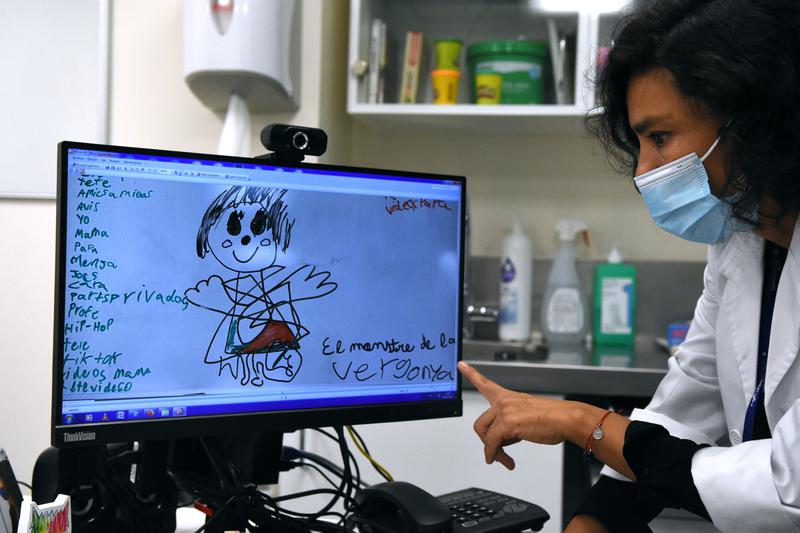1 in 3 aggressors of patients treated for sexual violence in Barcelona children's unit are minors
Vall d'Hebron hospital team treated 341 children and adolescents in past year and call for more education

32% of the aggressors of children and adolescents treated for sexual violence at Barcelona's Vall d'Hebron hospital are minors.
The hospital's Child and Adolescent Violence Care Unit, known as the EMMA team, published figures on Tuesday relating to its second year of operation.
Since November 2021, they have treated 341 patients, 34 more than the previous year. The majority, 79%, are victims of sexual violence. The typical patient profile is a 13-year-old girl.
The coordinator of the unit, Dr. Anna Fàbregas, highlighted the importance of education to prevent this violence: "The empowerment of girls and boys is very important. We must do it at home and at school. If we empower them, maybe their aggressors will not have it so easy."
'Monster of shame'
At the press conference on Tuesday, the unit's leaders showed a drawing made by one of the patients, who could not verbalize the violence she had suffered. She called it 'the monster of shame'.
Dolls, jigsaws and plasticine lie in the corner of the room. This is where the EMMA team works, catering for children under the age of 16 who suffer violence in Barcelona.
Violence against children is a "very serious public health problem," something still invisible and underdiagnosed, Dr. Fàbregas warned. "What we see is the tip of the iceberg."
Aggressors: 96% men
Most patients treated in the unit had suffered sexual violence (79%); 15.5%, physical violence and 3% neglect. It is girls who suffer the most from sexual violence, 87%. By age, 42% are over 13 years old; 34% are between 8 and 12 years old and 23.5% are less than 7 years old.
As for the aggressors, 96% are men. "Who carries out this violence? The answer is clear, the majority are men", Mireia Forner, a psychologist explained.
Sexual violence occurs within the family in 50% of the cases reported. In 34% of cases, the aggressor is the victim's father. A cousin in the aggressor in 17% of cases.
When sexual violence occurs outside the family, in 42% of cases it is carried out by a peer of the victim, someone of a similar age.
Dr Fàbregas said a "significant" percentage of assaults happen between peers, especially among teenagers. One third of aggressors are minors, under 18 years of age.
The team treated three women under the age of 16 who became pregnant after being raped.
Sexual education key
The EMMA unit leaders recognize that there is "a lot of work to be done in relation to prevention" and emphasize the importance of emotional and sexual education.
It should start in early childhood education they say, including teaching girls and boys the real names of the intimate parts of the body: breasts, vulva and penis. Children should also be taught that no one can touch their intimate parts except, for example, for medical purposes, or at bath time for younger children.
To eradicate sexual violence it is necessary to "work with children so that they know what affectionate relationships and sexual relationships are, based on consent, trust, respect, communication, and do away with many gender stereotypes."
Detecting cases of violence
Detecting cases of violence against minors is often difficult because they feel afraid or ashamed to explain what has happened.
The EMMA team has found that children and teenagers tend to confide primarily with their mother (45%) and, secondly, at school (17%).
The unit's health social worker, Giuliana Rios, highlighted the fact that educational professionals can "break the cycle of violence" and that the school environment is also "a space to offer safety, trust, protection and support to the child and their families."